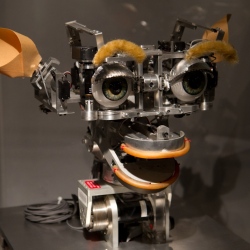
An observational study has found that prostate cancer patients who undergo robotic-assisted prostate surgery have fewer instances of cancer cells at the edge of their surgical specimen and less need for additional cancer treatments like hormone or radiation therapy than patients who have traditional surgery.
The study, published online Feb. 19 in the journal European Urology, was led by Dr. Jim Hu, UCLA’s Henry E. Singleton Professor of Urology and director of robotic and minimally invasive surgery in the urology department at the David Geffen School of Medicine at UCLA.
Although it is becoming more popular, robotic-assisted radical prostatectomy, the complete removal of the prostate using a robotic apparatus, remains controversial because there has been little evidence that it provides better cancer control than open radical prostatectomy, the traditional surgical approach, which is less costly.
In an effort to determine whether or not robotic surgery offered an advantage, Hu and his colleagues compared 5,556 patients who received robotic surgery with 7,878 who underwent open surgery between 2004 and 2009. Data was provided by the Surveillance, Epidemiology, and End Results–Medicare, a program of cancer registries that collect clinical and demographic information on people with cancer.
The researchers looked at the surgical margin status of the two groups, which is the amount of cancer cells at the edge of the removed prostate specimen. A positive margin, the presence of cancer cells at the edge, may result from cutting through the cancer and leaving some behind rather than cutting around the cancer completely. In prostate cancer, this has been shown to lead to a greater risk of recurrence and death from the disease.
